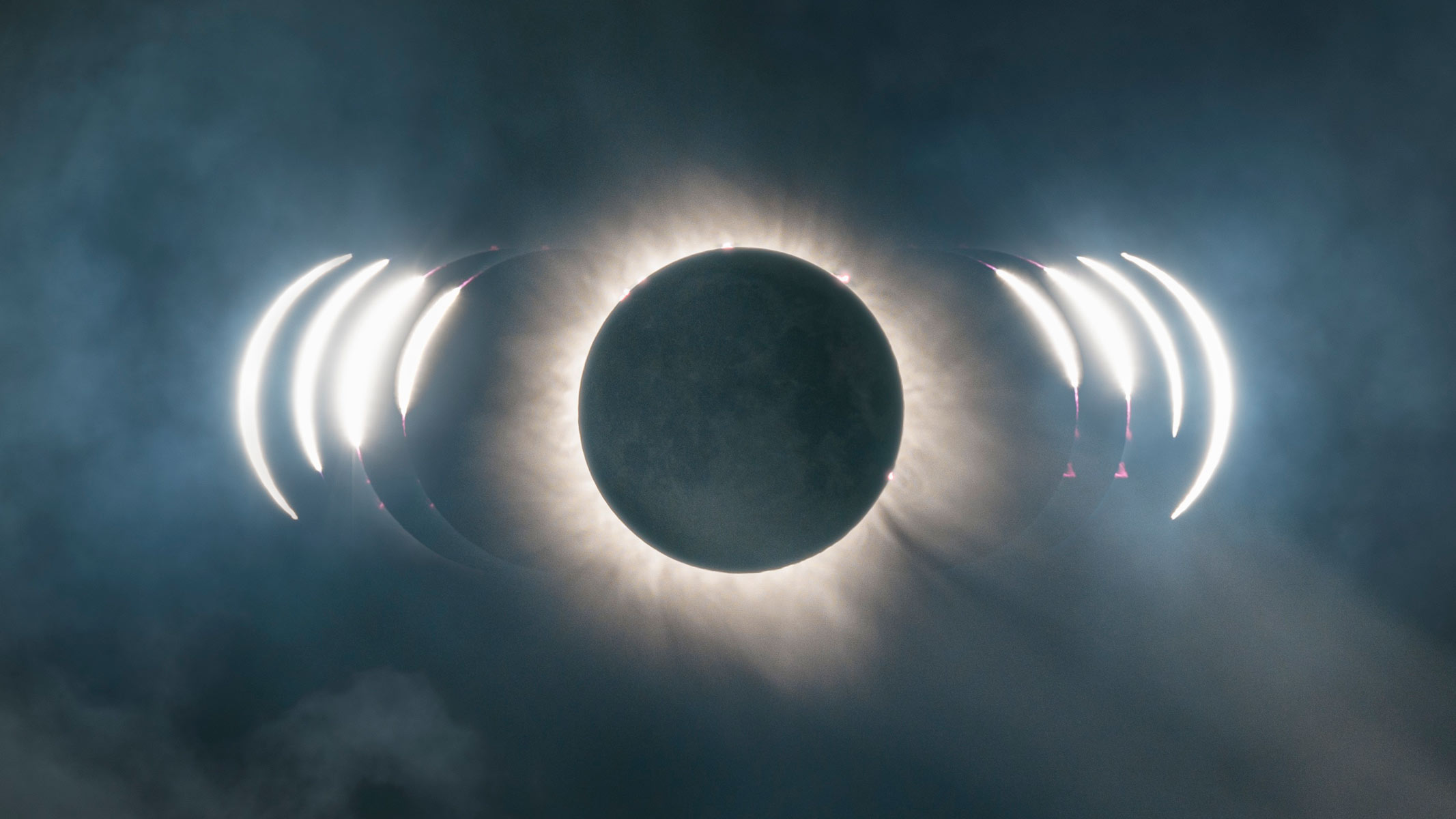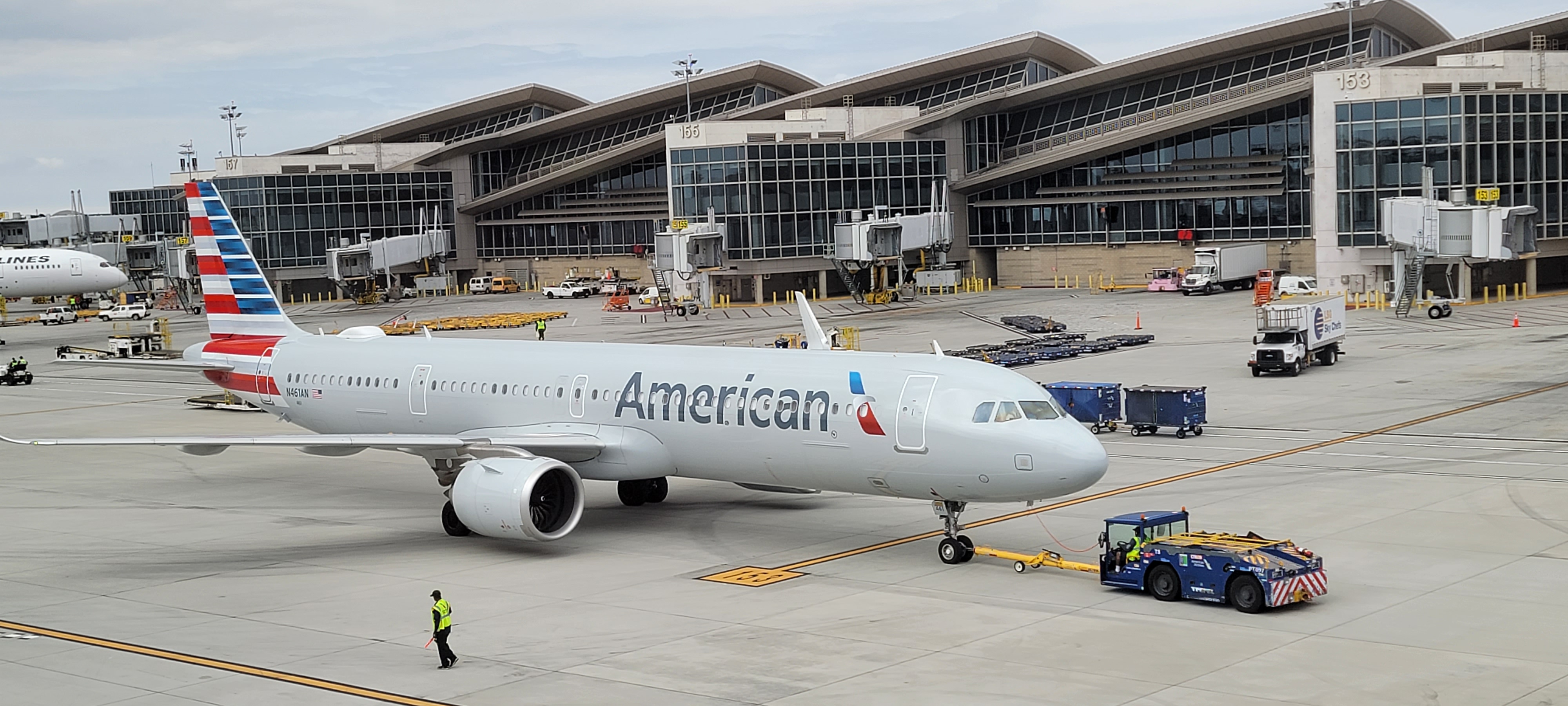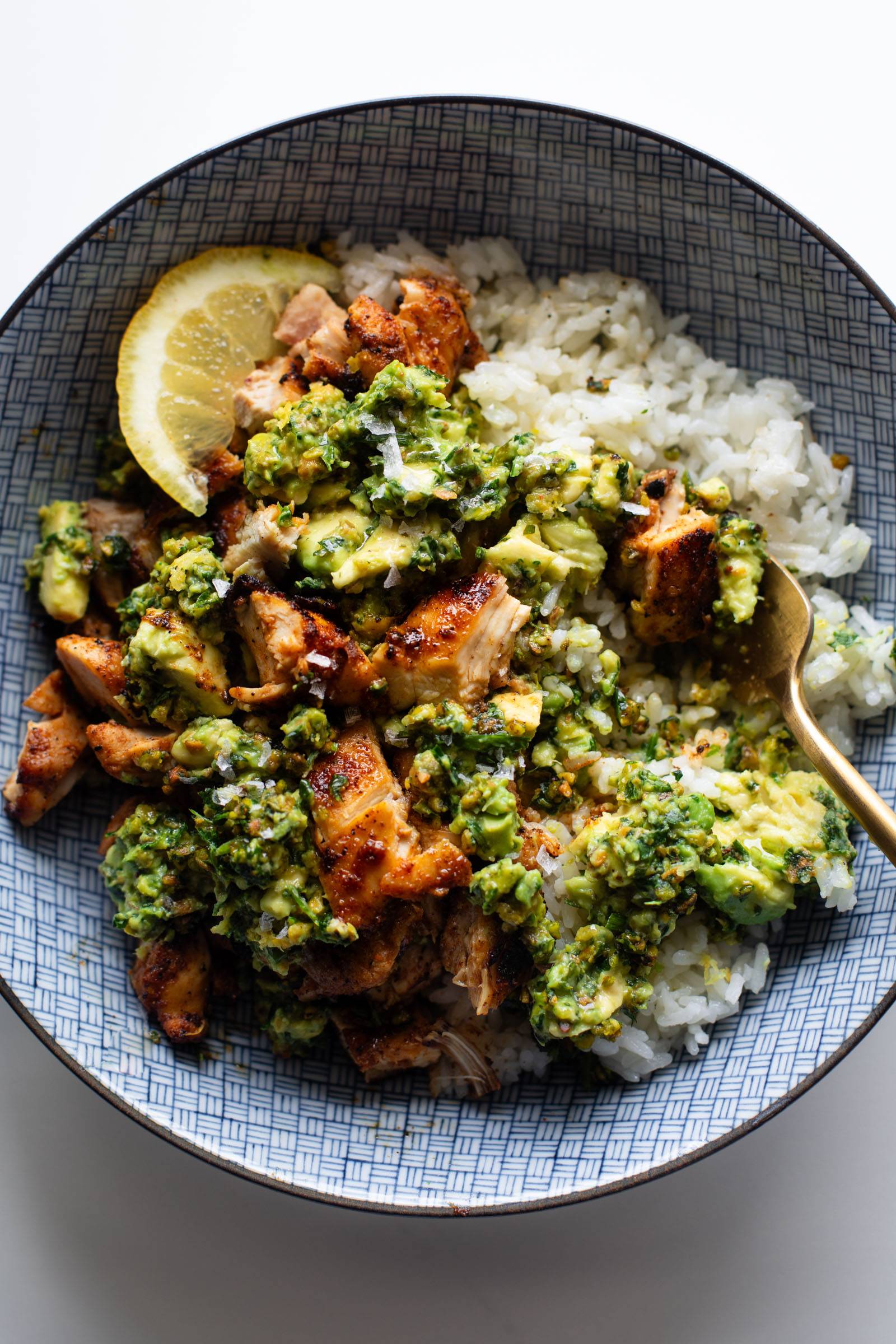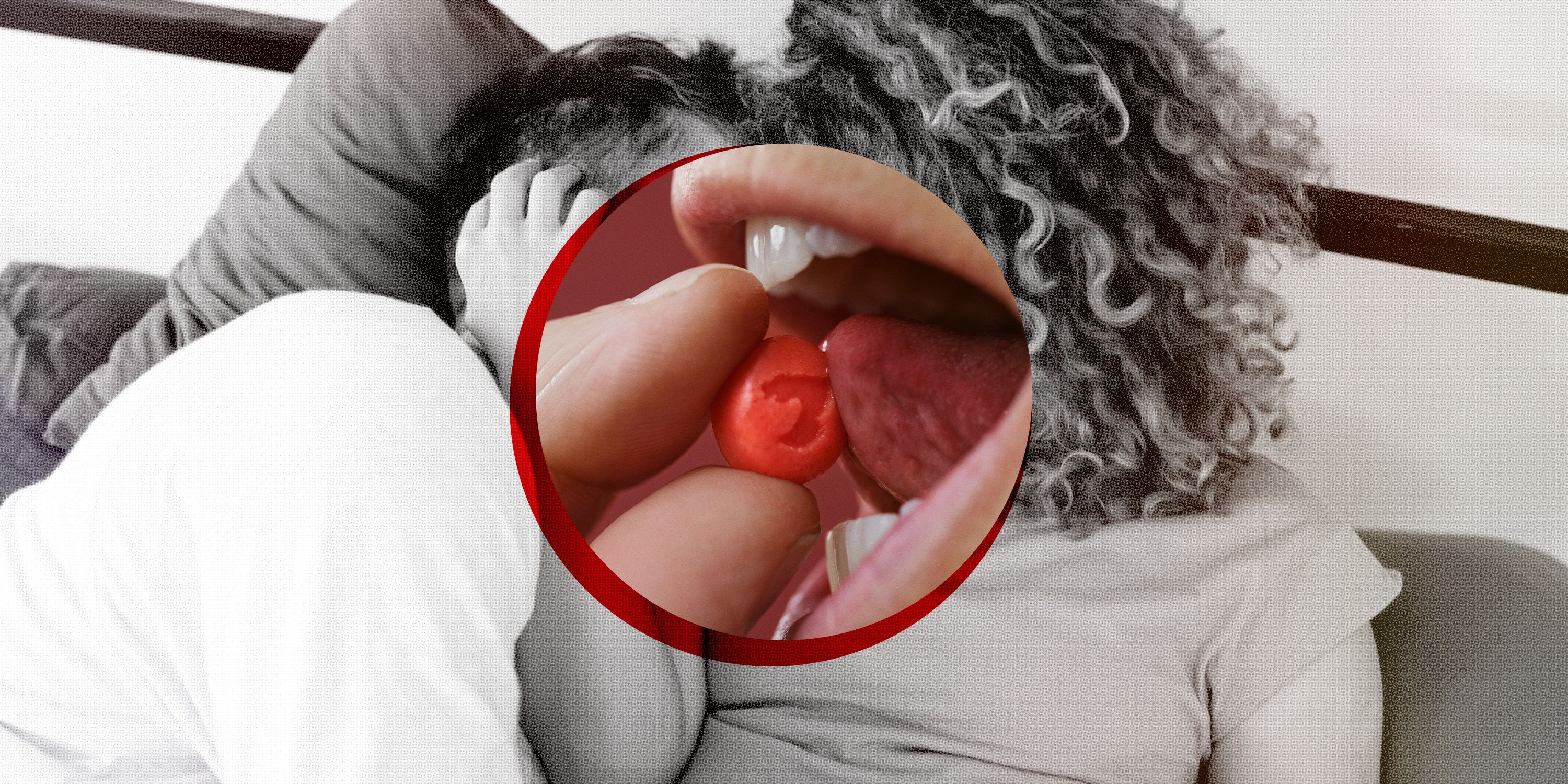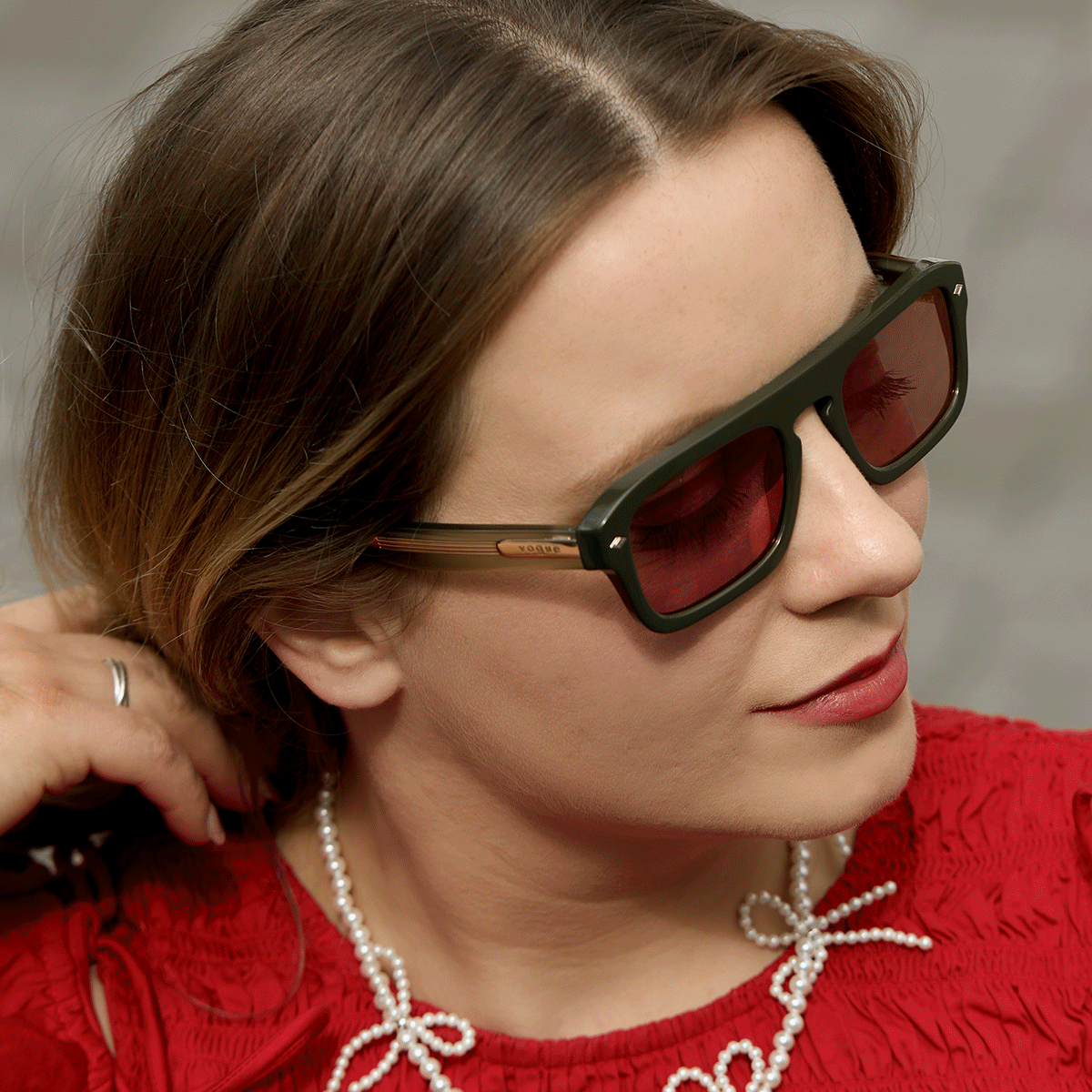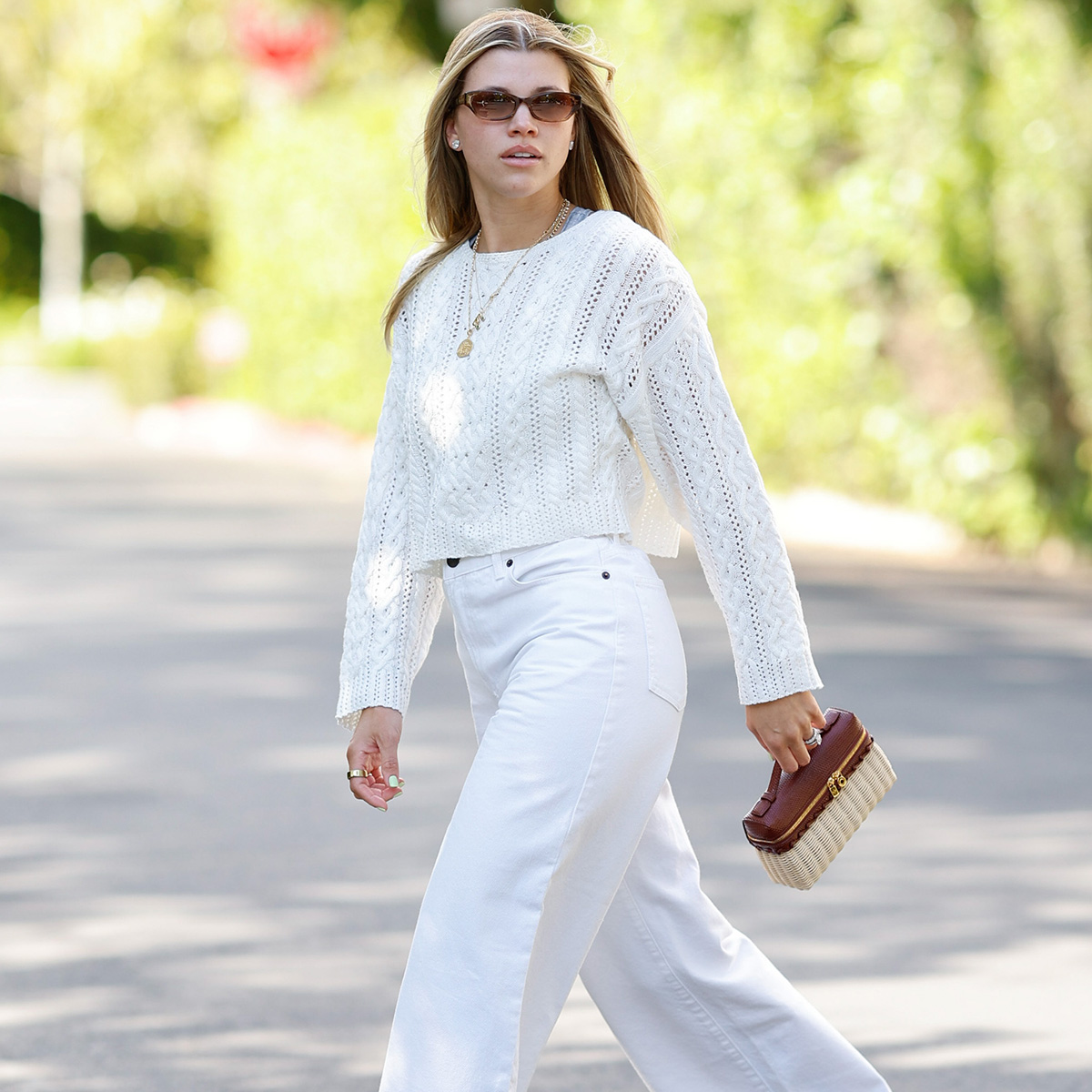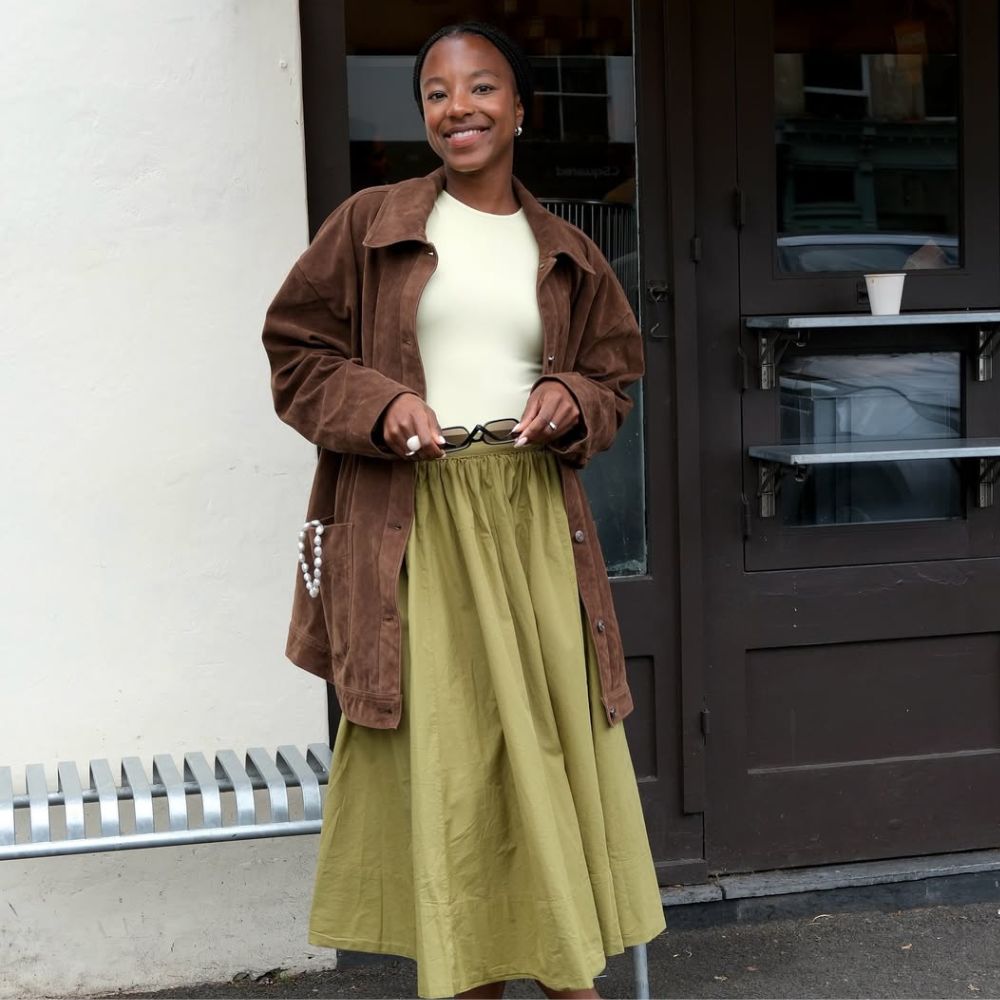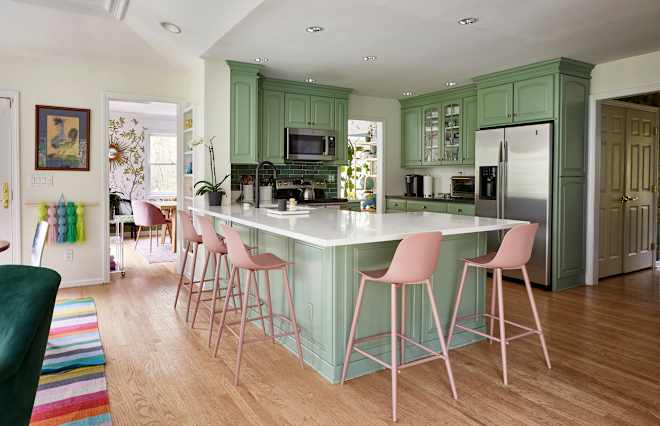Best Laptop for Photo Editing on a Budget: 10 Expert Picks (2025 April)
With our list of the best laptop for photo editing on a budget, you can take your love for photo editing to the next level without breaking the bank.

The perception that a good photo editing laptop has to be expensive is a myth– and I’m here to break it with my hand-picked selection to help you find the best laptop for photo editing on a budget.
Whether you use Adobe Photoshop or any other photo editing app, these photo editing laptops can keep up with your favorite editing apps, and a lot more. So, read on as I share my top picks for the best laptop for photo editing on a budget in 2025.
Quick List: Best Laptop for Photo Editing on a Budget 2025
Here’s a list of the best laptops for photo editing on a budget:
- SAMSUNG 13.3” Galaxy Book2 Pro — Best Overall (Editor’s Choice)
- Lenovo Ideapad Gaming3 Laptop — Best Performance Laptop for Photo Editing
- Dell Inspiron 15 3535 Business Laptop — Affordable Windows Laptop for Photo Editing
- Acer Swift Go 14 — Best Laptop for Traveling Photographers
- Microsoft Surface Laptop Go 3 — Best Touchscreen Laptop for Photo Editing
- ASUS TUF Gaming F15 Gaming Laptop — Best Laptop for Adobe Photoshop
- Apple 2020 MacBook Air Laptop M1 Chip — Best IOS Laptop for Photo Editing
- Lenovo V15 Laptop — Best with Comfortable Keyboard and Trackpad
- HP Pavilion Business & Student Laptop — Best Laptop for Multitasking
- MSI GF63 15.6″ FHD Laptop — Best Laptop for Professional Photographers
Which is the Best Budget Laptop for Photo Editing?
My experience with the Samsung Galaxy Book2 Pro proved it to be an excellent choice for photo editors on a budget. Its impeccable processing power, stunning display, lightweight design, long battery life, and appealing price point make it perfect for photography professionals on a budget.
The Samsung Galaxy Book2 Pro stands out as the best tablet for Procreate, excelling in photo editing with its powerful 12th Gen Intel Core i5 processor, vibrant AMOLED screen, exceptional color accuracy, it is highly portable, with robust battery life and fast-charging capability. Overall, its impressive display and connectivity make it an excellent choice for efficient, on-the-go editing.
- AMOLED enhances photo editing precision.
- Extremely light and portable.
- Strong performance for various photo editing tasks.
- Limited resources for big projects.
- Consider external storage if necessary.
My Top 3 Picks
|
Primary Rating:
4.9
|
Primary Rating:
4.8
|
Primary Rating:
4.7
|
|
$1,108.92
|
$699.99
|
$739.00
|
|
Screen Size:
13.3 inches
|
Screen Size:
15.6 inches
|
Screen Size:
15.6" FHD
|
|
Storage:
256GB SSD
|
Storage:
1TB PCIe SSD
|
Storage:
1 TB
|
|
Processor:
Intel Core i5
|
Processor:
AMD Ryzen 5 5500H
|
Processor:
Intel Core i5-11400H
|
|
RAM:
8 GB LPDDR5
|
RAM:
32GB DDR4
|
RAM:
16GB
|
|
Pros:
|
Pros:
|
Pros:
|
- Vibrant AMOLED display
- Exceptionally lightweight and portable
- Strong processor and 32GB RAM
- Dedicated RTX 2050 GPU
- Strong performance for intense photo editing.
- Suitable display for diverse editing tasks.
- Ample RAM and SSD for efficient multitasking and storage.
Detailed Reviews of the Best Laptops for Photo Editing on a Budget
1. SAMSUNG 13.3” Galaxy Book2 Pro — Best Overall (Editor’s Choice)

Best Mid Range Laptop for Photo Editing
Display: 13.3 inches | Graphics: Integrated graphics | Processor: 12th Gen Intel Core i5, 1.7 GHz | RAM: 8 GB LPDDR5 | Storage: 256GB SSD.
When I got my hands on the Samsung Galaxy Book2 Pro, its solid combination of high performance and sleek package not only impressed me but also elevated best photo editing laptop experience. As someone who often edits photos both in-studio and while traveling, I needed a laptop that could keep up with my demanding schedule. This model, with its latest 12th Gen Intel Core i5 processor and ultra-light design, seemed like a perfect fit.
Editing photos on the Galaxy Book2 Pro was a delight, thanks to its AMOLED screen. The color accuracy and contrast levels are exceptional, making it easier to tweak the finer details in images. I particularly appreciated the screen’s brightness during outdoor editing sessions, where glare can often be a problem.
The performance, powered by the Intel Core i5, handled most of my photo editing software with ease. I could smoothly run Adobe Photoshop and Lightroom without noticeable lag, even when working with large files.
Its portability was spot on for me. Weighing less than 2 pounds, it was incredibly easy to carry around. This was particularly beneficial during a recent outdoor photo shoot where I needed to make quick edits on the spot.
The battery life is robust, easily lasting through long editing sessions. And on occasions when I needed a quick charge, the fast-charging capability proved beneficial, providing enough power in just a short amount of time.
As a user of multiple Galaxy devices, the seamless integration and file-sharing capabilities significantly streamlined my workflow, reducing the time spent on transferring files between devices.
However, during a particularly intense project, I did find the 8GB RAM somewhat limiting when juggling multiple high-resolution images. Additionally, I had to invest in an external SSD to manage my extensive photo library, as the built-in 256GB storage was not sufficient.
Based on my experience, the Samsung Galaxy Book2 Pro is an excellent choice for photo editors who value efficiency and portability. While it might require additional storage solutions for extensive projects, its impressive display, performance, and connectivity offer a well-rounded package for editing on the go.
“The Galaxy Book 2 Pro is an impressively compact ultra-thin productivity laptop that will delight all comers.” [By Zarif Ali, androidauthority]
| PROS | CONS |
 Vibrant AMOLED display enhances photo editing accuracy. Vibrant AMOLED display enhances photo editing accuracy. |
 Limited RAM and storage for high-volume, high-resolution projects. Limited RAM and storage for high-volume, high-resolution projects. |
 Exceptionally lightweight and portable. Exceptionally lightweight and portable. |
 Additional external storage might be necessary. Additional external storage might be necessary. |
 Solid performance for most photo editing tasks. Solid performance for most photo editing tasks. |
|
 Long-lasting battery life with quick charging. Long-lasting battery life with quick charging. |
|
 Seamless synchronization with other Galaxy devices. Seamless synchronization with other Galaxy devices. |
Latest Price on Amazon:
2. Lenovo IdeaPad Gaming 3 — Best Performance Laptop for Budget Photo Editing

Best Budget Laptop for Heavy Photo Editing Workloads
Display: 15.6” FHD IPS | Graphics: NVIDIA GeForce RTX 2050 | Processor: AMD Ryzen 5 5500H | RAM: 32GB DDR4 | Storage: 1TB PCIe SSD
The Lenovo IdeaPad Gaming 3 is a fantastic pick for those who need serious multitasking power and graphics performance without stepping into premium laptop pricing.
Its 15.6-inch Full HD IPS display delivers crisp visuals, and while the 45% NTSC color gamut is more basic compared to higher-end models, it remains perfectly capable for general photo editing tasks and casual creative work. The anti-glare screen also makes it easier to edit in bright environments.
What really makes the IdeaPad Gaming 3 shine is its AMD Ryzen 5 5500H processor combined with 32GB of RAM and a dedicated NVIDIA GeForce RTX 2050 GPU. This setup can easily handle intensive tasks like high-resolution photo editing, batch exporting, and working across multiple editing software without slowdown. The large 1TB PCIe SSD ensures rapid file access and plenty of space for storing extensive photo libraries.
Though a bit heavier at just under 5 pounds, this laptop brings a strong mix of durability and powerful internals, ideal for users who prioritize performance over ultra-portability. Connectivity is also well-covered with Wi-Fi 6, USB-C, USB-A, HDMI, and an Ethernet port, supporting efficient file transfers and stable online access for cloud editing.
One area to note is that the display’s limited color range might not meet the standards of professionals needing highly color-accurate work. For such users, pairing it with an external calibrated monitor could be a simple solution.
Overall, if you’re looking for a powerful machine that can handle demanding editing sessions while staying within a reasonable budget, the Lenovo IdeaPad Gaming 3 offers a compelling combination of speed, storage, and dedicated graphics performance.
| PROS | CONS |
 Strong processor and 32GB RAM for smooth multitasking. Strong processor and 32GB RAM for smooth multitasking. |
 Display covers only 45% NTSC color gamut. Display covers only 45% NTSC color gamut. |
 Dedicated RTX 2050 GPU enhances photo and video editing. Dedicated RTX 2050 GPU enhances photo and video editing. |
 Heavier compared to ultra-thin models. Heavier compared to ultra-thin models. |
 Generous 1TB SSD storage for large file libraries. Generous 1TB SSD storage for large file libraries. |
|
 Good connectivity options including Ethernet and Wi-Fi 6. Good connectivity options including Ethernet and Wi-Fi 6. |
|
 Backlit keyboard for easier use in low light. Backlit keyboard for easier use in low light. |
Latest Price on Amazon:
3. Dell Inspiron 15 3535 Business Laptop — Affordable Laptop for Photo Editing

Best Cheap Laptop for Photo Editing
Display: 15.6″ FHD (1920 x 1080) WVA Anti-glare | Graphics: Integrated AMD Radeon Graphics | Processor: AMD 6-Core Ryzen 5 7530U Processo | RAM: 16GB DDR4 SDRAM | Storage: 512GB SSD.
I chose the Dell Inspiron 15 3535 for its impressive blend of functionality and affordability. This model, with its AMD Ryzen 5 processor and Full HD display, seemed to tick all the right boxes for budget-conscious photo editors.
My experience with the 15.6″ Full HD Anti-Glare display was quite positive. The clarity and resolution it offers made scrutinizing details in photos a breeze. The anti-glare aspect of the screen was particularly helpful, as I often work in various lighting conditions and it significantly reduced glare and reflections.
Performance-wise, the AMD Ryzen 5 7530U Processor combined with 16GB of RAM was more than sufficient for running photo editing software. I regularly use Adobe Photoshop and Lightroom for my projects, and this laptop handled them smoothly. The 512GB SSD also proved to be a boon, providing speedy access to my large files and extensive photo libraries.
The variety of connectivity options, including a USB-C port and an SD card slot, was a feature I found immensely useful. It simplified the process of transferring photos from my camera and other devices, enhancing my overall workflow efficiency.
However, my experience wasn’t without its shortcomings. The absence of keyboard backlighting posed a challenge during late-night editing sessions. Also, while the laptop’s performance and features are commendable, its plain design might not catch the eye of those who value aesthetics as much as functionality.
Overall, the Dell Inspiron 15 3535 emerges as a solid option for photo editors who are mindful of their budget. It adeptly balances cost with performance, especially in areas crucial for photo editing like display quality and processing power.
| PROS | CONS |
 Excellent 15.6″ Full HD Anti-Glare display for detailed image work. Excellent 15.6″ Full HD Anti-Glare display for detailed image work. |
 Lack of keyboard backlighting, a drawback in low-light conditions. Lack of keyboard backlighting, a drawback in low-light conditions. |
 Robust performance with AMD Ryzen 5 and 16GB RAM. Robust performance with AMD Ryzen 5 and 16GB RAM. |
 Plain design may not appeal to all users. Plain design may not appeal to all users. |
 Ample and fast storage with a 512GB SSD. Ample and fast storage with a 512GB SSD. |
|
 Useful connectivity options for easy file transfer. Useful connectivity options for easy file transfer. |
|
 Affordably priced for budget-conscious professionals. Affordably priced for budget-conscious professionals. |
Latest Price on Amazon:
4. Acer Swift Go 14 Laptop — Best Lightweight Budget Laptop for Photo Editing

Best Portable Laptop with Color-Accurate Touch Display
Display: 14” WUXGA Touch | Graphics: Intel ARC Graphics | Processor: Intel Core Ultra 7 155H | RAM: 16GB LPDDR5X | Storage: 512GB SSD
The Acer Swift Go 14 stands out for those seeking a lightweight, powerful machine designed to handle demanding photo editing tasks without stretching the budget.
Its 14-inch WUXGA IPS touchscreen offers impressive 100% sRGB color coverage, ensuring accurate color representation critical for editing work. With a resolution of 1920×1200 and slim bezels, this display delivers both vibrant visuals and a generous workspace, making detailed edits a more immersive experience.
Under the hood, the Swift Go 14 is powered by the next-gen Intel Core Ultra 7 155H processor, paired with Intel ARC integrated graphics. During usage, the combination of 16 cores and 22 threads provided more than enough muscle to run programs like Lightroom and Photoshop smoothly, handling complex tasks like batch editing or applying heavy filters without slowing down.
Portability is another strong suit. Weighing just under 3 pounds and measuring only 0.59 inches thick, this laptop is perfect for creatives who move between studios, cafes, and client meetings. Despite its slim profile, it includes a good selection of ports — two Thunderbolt 4 ports, two USB 3.2 ports, an HDMI 2.1, and a microSD card reader — providing flexibility for external drives and cameras.
Another highlight is the battery life, offering up to 12.5 hours on a full charge, which comfortably covered long editing sessions on the go. The laptop’s AI-powered features, like background removal in photos and video call enhancements, also add an extra layer of convenience for modern creators.
While the Swift Go 14 impresses with speed and portability, those seeking dedicated high-end graphics performance might find the Intel ARC slightly limited compared to discrete GPUs. However, for the price and features, it’s an exceptional choice for editors who prioritize color accuracy, mobility, and reliable everyday performance.
| PROS | CONS |
 Highly color-accurate 14″ touch display. Highly color-accurate 14″ touch display. |
 Integrated graphics may limit very heavy graphical workloads. Integrated graphics may limit very heavy graphical workloads. |
 Powerful Intel Core Ultra 7 processor with AI enhancements. Powerful Intel Core Ultra 7 processor with AI enhancements. |
 No option for RAM upgrades (onboard memory). No option for RAM upgrades (onboard memory). |
 Lightweight, thin, and highly portable. Lightweight, thin, and highly portable. |
|
 Excellent battery life with fast-charging support. Excellent battery life with fast-charging support. |
|
 Wide range of ports including Thunderbolt 4. Wide range of ports including Thunderbolt 4. |
Latest Price on Amazon:
5. Microsoft Surface Laptop Go 3 — Best Touchscreen Laptop for Photo Editing

Best Budget Touchscreen Laptop for Photo Editing
Display: 12.4″ PixelSense touchscreen 1366 x 768 pixels | Graphics: Integrated ARM Mali-T604 | Processor: Intel Core i5-1235U | RAM: 8 GB LPDDR5 | Storage: 256 GB SSD.
The Surface Laptop Go 3’s fusion of a tactile touchscreen experience with the agility of a lightweight laptop blew me– especially considering its super affordable price point. It didn’t just let me edit photos but also ensured that I did so with ease and efficiency.
The 12.4” PixelSense touchscreen is more than just a display– it’s an interactive canvas. Although it may not offer the highest resolution, its responsiveness is a boon for photo editors who prefer a hands-on approach. During my photo expeditions, this touchscreen was a delight, allowing for swift, intuitive edits.
Equipped with an Intel Core i5 processor and 8GB RAM, the Surface Laptop Go 3 efficiently handles various photo editing software. The 256GB SSD has decent space for storing high-resolution images, though not vast, it’s sufficiently quick for on-the-go editing.
Its ultra-lightweight design, weighing under 2.5 pounds, proved quite helpful for me. It effortlessly slipped into my gear bag, and with up to 15 hours of battery life, it was a reliable device for long shoots.
The Fingerprint Power Button and the Studio Mics with Voice Clarity feature aren’t just add-ons; they significantly enhanced my user experience. The keyboard, while lacking backlighting, offered comfort during prolonged use, and the precision touchpad made navigation seamless.
However, there are some trade-offs. The screen’s lower resolution might fall short for photographers who require ultra-fine details. The absence of a backlit keyboard can be a hindrance in dim environments, and the storage, though speedy, might necessitate additional external solutions for extensive photo collections.
The Microsoft Surface Laptop Go 3 emerges as a compelling option for the itinerant photographer who values the blend of tactile control, mobility, and budget-friendliness. Its strengths lie in its portability, responsive touchscreen, and solid battery life, making it a practical choice for on-the-go photo editing.
| PROS | CONS |
 Exceptionally portable for travel. Exceptionally portable for travel. |
 Screen resolution may not satisfy all detail-oriented tasks. Screen resolution may not satisfy all detail-oriented tasks. |
 Engaging touchscreen for hands-on photo editing. Engaging touchscreen for hands-on photo editing. |
 Non-backlit keyboard. Non-backlit keyboard. |
 Sufficient performance with Intel Core i5 and 8GB RAM. Sufficient performance with Intel Core i5 and 8GB RAM. |
 Storage capacity could be limiting for large photo libraries. Storage capacity could be limiting for large photo libraries. |
 Long-lasting battery life. Long-lasting battery life. |
|
 Additional features like Fingerprint login and quality Studio Mics. Additional features like Fingerprint login and quality Studio Mics. |
Latest Price on Amazon:
6. ASUS TUF Gaming F15 Gaming Laptop — Best Laptop for Adobe Photoshop

Best Budget Laptop for Lightroom and Adobe Photoshop
Display: 15.6” Full HD IPS Type Display | Graphics: NVIDIA GeForce RTX 2050 | Processor: Intel Core i5-11400H | RAM: 8GB DDR4 | Storage: 512GB.
Though the ASUS TUF Gaming F15 is a solid and powerful gaming laptop, it has great photo editing capabilities for the same reason– especially when it comes to running complex software like Adobe Photoshop. Its blend of high-performance hardware and robust durability made it a compelling choice for my photo editing projects.
The laptop’s Intel Core i5-11400H processor and NVIDIA GeForce RTX 2050 graphics card made it a powerhouse for running Adobe Photoshop. Its ability to handle complex layers, filters, and edits in Photoshop was impressive. The dedicated graphics card ensured smooth rendering of high-resolution images and swift processing of graphics-intensive tasks.
The 144Hz 15.6” Full HD IPS display was a joy to use. Its high refresh rate might be overkill for photo editing, but the crisp, vibrant display quality enhanced the overall editing experience. The color accuracy and clarity were beneficial for detailed photo work.
With 8GB of DDR4 RAM and a 512GB PCIe NVMe M.2 SSD, the laptop provided sufficient speed and storage for handling large Photoshop files and extensive photo libraries. The fast SSD particularly improved the loading times for both the application and large image files.
Its MIL-STD-810H military-grade toughness reassured me of its durability, a significant factor for editors who travel or work in varied environments. The variety of ports, including Thunderbolt 4 and DisplayPort support, offered versatile connectivity options for peripherals.
However, there were some downsides. The webcam, touchpad, and speakers were underwhelming, which could be a drawback for editors who rely on these features for video conferencing or precise cursor movements.
Overall, the ASUS TUF Gaming F15 is an excellent choice for photo editors, especially those using Adobe Photoshop extensively. It balances high-end performance with durability, although some aspects like the webcam and touchpad quality may not meet everyone’s needs.
| PROS | CONS |
 Powerful Intel Core i5 processor and RTX 2050 GPU for Photoshop. Powerful Intel Core i5 processor and RTX 2050 GPU for Photoshop. |
 Webcam, touchpad, and speaker quality are subpar. Webcam, touchpad, and speaker quality are subpar. |
 High refresh rate FHD display enhances visual editing experience. High refresh rate FHD display enhances visual editing experience. |
 May be overpowered for users with basic photo editing needs. May be overpowered for users with basic photo editing needs. |
 Adequate storage and memory for photo editing tasks. Adequate storage and memory for photo editing tasks. |
|
 Durable build and comprehensive connectivity options. Durable build and comprehensive connectivity options. |
Latest Price on Amazon:
7. Apple 2020 MacBook Air Laptop M1 Chip — Best Budget MacBook for Photo Editing

Best Apple Budget Photo Editing Laptop
Display: 13.3-inch Retina Display | Graphics: Integrated (Apple M1 chip with an 8-core GPU) | Processor: Apple M1 chip with an 8-core CPU | RAM: 8GB | Storage: 256 GB SSD.
I turned to the Apple 2020 MacBook Air with its heralded M1 Chip, intrigued by its seamless integration with the iOS ecosystem and the blend of performance, portability, and user-friendliness it offered.
The M1 Chip’s 8-core CPU provided a significant performance boost, especially noticeable in resource-intensive photo editing software like Adobe Photoshop and Lightroom. The efficiency of the M1 Chip meant faster processing of images and smoother handling of large files, which I found particularly beneficial during my editing sessions.
The 13.3-inch Retina display, with its 2560-by-1600 resolution, brought a new level of detail and vibrancy to images. The color accuracy and sharpness were essential for precision in photo editing, making it easier to tweak and perfect visuals.
With 8GB of unified memory, the MacBook Air was adept at handling multiple tasks simultaneously. The 256GB SSD provided sufficient space for storing a decent amount of high-resolution images and offered quick file access.
Weighing just 2.8 pounds and sporting a fanless design, it was incredibly portable and silent, even under load. The sleek and environmentally friendly build, made from 100 percent recycled aluminum, added to its appeal.
However, there were some limitations. The thicker bezels around the screen felt a bit dated, and the laptop was light on ports, which could be limiting for photo editors who rely on various peripherals. I often found myself needing an adapter to connect external devices.
All in all, the Apple 2020 MacBook Air with the M1 Chip stands out as a top choice for photo editors looking for an iOS-compatible laptop. Its combination of a powerful M1 processor, stunning Retina display, great battery life, and portability makes it well-suited for photo editing tasks.
| PROS | CONS |
 Powerful M1 Chip for efficient photo editing. Powerful M1 Chip for efficient photo editing. |
 Thicker bezels around the screen. Thicker bezels around the screen. |
 High-resolution Retina display ideal for detailed image work. High-resolution Retina display ideal for detailed image work. |
 Limited port selection requires additional adapters for connectivity. Limited port selection requires additional adapters for connectivity. |
 Lightweight and silent operation, perfect for on-the-go editing. Lightweight and silent operation, perfect for on-the-go editing. |
|
 Seamless integration with other Apple devices and software. Seamless integration with other Apple devices and software. |
Latest Price on Amazon:
8. Lenovo V15 Laptop — Best with Comfortable Keyboard and Trackpad

Best Laptop for Photoshop on a Budget
Display: 15.6″ | Graphics: Integrated AMD Radeon Graphics | Processor: AMD Ryzen 5 5500U Hexa-core Processor | RAM: 16GB DDR4 | Storage: 1TB.
When I first encountered the Lenovo V15, it was its promise of balancing performance with user comfort that piqued my interest– and the performance didn’t disappoint. As someone who often juggles multiple photo editing projects, I was curious to see how this laptop would hold up in real-world scenarios, especially considering its budget-friendly positioning.
My experience with the AMD Ryzen 5 5500U Hexa-core Processor was impressive. Its ability to smoothly run Photoshop and Lightroom simultaneously, without any noticeable lag, was spectacular. The 16GB RAM was more than adequate for multitasking, a frequent requirement in my editing workflow.
The 1TB SSD was a standout feature for me. As a photo editor, having quick access to large files and efficient data transfer is crucial. This laptop delivered on both fronts, making my editing process more streamlined and less time-consuming.I found the keyboard and trackpad particularly comfortable during long editing sessions, which is a significant plus for any photo editor.
The laptop included a variety of ports: 1 x USB 3.0 Type-A, 1 x USB 2.0 Type-A, and 1 x HDMI, along with an RJ45 connector for wired internet access. The absence of a USB Type-C port was noticeable, as many peripherals rely on this standard. The numeric keypad was a handy addition for quick data entry.
The display’s color limitations and lack of a USB Type-C port were the main drawbacks in my usage. These aspects made the laptop less than ideal for high-end, color-sensitive photo editing tasks and slightly limited its versatility.
The Lenovo V15 is a reliable choice for photo editors looking for performance and comfort within a budget. Its processor, memory, and storage are well-suited for most editing tasks, though the display and connectivity limitations might require workarounds like external monitors and adapters.
| PROS | CONS |
 Robust performance with AMD Ryzen 5 processor. Robust performance with AMD Ryzen 5 processor. |
 Display lacks color accuracy and viewing angles. Display lacks color accuracy and viewing angles. |
 Adequate multitasking capabilities with 16GB RAM. Adequate multitasking capabilities with 16GB RAM. |
 Absence of a USB Type-C port limits modern device connectivity. Absence of a USB Type-C port limits modern device connectivity. |
 Substantial and fast storage with 1TB SSD. Substantial and fast storage with 1TB SSD. |
 Not ideal for color-intensive photo editing. Not ideal for color-intensive photo editing. |
 Comfortable keyboard and trackpad for extended use. Comfortable keyboard and trackpad for extended use. |
Latest Price on Amazon:
9. HP Pavilion Business & Student Laptop — Best Laptop for Multitasking

Best Budget Photo Editng Laptop for Multitasking
Display: 15.6″ | Graphics: AMD Radeon Graphics | Processor: AMD Ryzen 3 5300U | RAM: 16 GB DDR4 | Storage: 1 TB PCIe NVMe M.2 (SSD).
At firsts, the HP Pavilion Business & Student Laptop stood out to me for its unique blend of cost-effectiveness and robust photo editing capabilites. But using it further made me realize that its multitasking capabilities are understated.
The AMD Ryzen 3 5300U Processor’s capability to outperform certain i7 models was evident when handling my photo editing tasks in applications like Adobe Lightroom and Photoshop. The processor efficiently managed editing workflows, even with multiple layers and effects.
With 16GB RAM, I experienced smooth multitasking, crucial for keeping various editing software and browser tabs open simultaneously without a hitch. The 1TB PCIe NVMe M.2 SSD was a significant upgrade, offering not only vast storage for large photo libraries but also quick access and transfer speeds.
The 15.6″ HD display, while not the highest resolution available, provided adequate clarity for editing. However, the color range of 45% NTSC could be a limitation for photo editors who rely heavily on color accuracy. The laptop includes a variety of connectivity options like USB Type-C and HDMI ports, enhancing its versatility.
However, the subpar webcam and the noticeable chassis flex were the primary drawbacks. For photo editors who might also rely on their laptops for client consultations or remote collaborations, the webcam quality could be a limitation.
Overall, the HP Pavilion Business & Student Laptop presents itself as a solid choice for photo editors who are budget-conscious yet require a machine capable of handling demanding editing software.
| PROS | CONS |
 Powerful AMD Ryzen 3 processor suitable for photo editing. Powerful AMD Ryzen 3 processor suitable for photo editing. |
 HD displays lack color accuracy for high-end photo editing. HD displays lack color accuracy for high-end photo editing. |
 Ample 16GB RAM and 1TB SSD for efficient multitasking and storage. Ample 16GB RAM and 1TB SSD for efficient multitasking and storage. |
 Noticeable chassis flex raises durability concerns. Noticeable chassis flex raises durability concerns. |
 Adequate port selection for connectivity. Adequate port selection for connectivity. |
 Webcam image quality is below average. Webcam image quality is below average. |
 Budget-friendly option for photo editors. Budget-friendly option for photo editors. |
Latest Price on Amazon:
10. MSI GF63 15.6″ FHD Laptop — Best Laptop for Professional Photographers on a Budget

Best Laptop for Photo and Video Editing on a Budget
Display: 15.6″ FHD | Graphics: NVIDIA GeForce GTX1650 | Processor: Intel Core i5-11400H | RAM: 16GB | Storage: 1 TB.
In my current workflow, the MSI GF63 has become a cornerstone tool. Its Intel Core i5-11400H processor, combined with the NVIDIA GeForce GTX 1650 graphics card, has been instrumental in my photo editing tasks. Whether I’m working on complex Photoshop layers or processing large batches of photos in Lightroom, this powerful laptop just handles it all with ease, making it an indispensable part of my daily workflow.
The 15.6″ FHD display, while not the top-tier in terms of color range, provides satisfactory clarity and vibrancy for my photo editing specifications and tasks. Its IPS-Level panel ensures that the colors and details I work on are accurately represented, a crucial factor in my photo editing process.
With 16GB of RAM and a 1TB NVMe SSD, multitasking has become a seamless experience. I often find myself switching between various software and large files, and the laptop’s quick response time significantly boosts my productivity.
Its relatively lightweight build for a gaming laptop has been a boon for my mobility. The array of connectivity options, including the USB Type-C and HDMI ports, allows me to effortlessly connect to external devices, enhancing my editing capabilities.
Despite its strengths, the average battery life does pose a challenge, especially when I’m working remotely. I’ve found carrying an external power bank or seeking power outlets to be necessary during long sessions. Additionally, navigating through the pre-installed bloatware initially took some time to optimize the system’s performance to my liking.
The MSI GF63 stands as a highly competent laptop for photo editing, balancing cost-effectiveness with good performance throughout. It’s a testament to how a well-chosen laptop can significantly impact a professional’s workflow.
“In short, this is not just a great wallet-friendly pick, but one of the best gaming laptops you can buy right now, especially if you’re on a budget.” [ Christian Guyton, techradar]
| PROS | CONS |
 Robust performance suitable for intensive photo editing. Robust performance suitable for intensive photo editing. |
 The display’s limited color range can be restrictive for some high-end editing. The display’s limited color range can be restrictive for some high-end editing. |
 Adequate display for a range of editing tasks. Adequate display for a range of editing tasks. |
 Managing battery life requires planning for fieldwork. Managing battery life requires planning for fieldwork. |
 Generous RAM and SSD for efficient multitasking and storage. Generous RAM and SSD for efficient multitasking and storage. |
 Initial setup required to deal with bloatware. Initial setup required to deal with bloatware. |
 Useful port selection for external monitor connectivity. Useful port selection for external monitor connectivity. |
Latest Price on Amazon:
How I Selected and Tested the Best Budget Laptops for Photo Editing
My Selection Process
- Exploring Key Features
- Processor Performance: I focused on laptops with potent processors like Intel Core i5/i7 or AMD Ryzen 5/7, ensuring they could efficiently run photo editing software.
- Display Quality: I prioritized laptops with high-resolution and color-accurate displays, essential for detailed photo editing.
- Memory and Storage: I looked for a minimum of 8GB RAM and at least 256GB SSD for smooth multitasking and quick file access.
- Graphics Capabilities: Where budget allowed, I considered laptops with dedicated GPUs for more intensive photo editing tasks.
- Battery Life and Portability: Essential for professionals like me who often work remotely, I sought laptops with a good balance between performance and battery life.
- Budget Considerations: I set a clear budget limit to stay within the ‘budget-friendly’ range while ensuring necessary features for photo editing weren’t compromised.
- Research and Shortlisting
- Market Survey: I conducted a comprehensive market survey to identify laptops fitting these criteria within the set budget.
- Brand Reliability: I considered the manufacturers’ reputations for reliability and after-sales service.
- User Reviews and Ratings: I scoured through online reviews and ratings, focusing on user experiences related to performance and display quality.
My Testing Process
- Performance Testing
- Software Compatibility: I tested the laptops with Adobe Photoshop and Lightroom to check compatibility and performance.
- Speed and Responsiveness: I evaluated boot-up times, software loading times, and multitasking responsiveness.
- Display Quality Assessment
- Color Accuracy Test: Using color calibration tools, I assessed the display’s color accuracy.
- Brightness and Contrast: I tested the screens in various lighting conditions to evaluate brightness levels and contrast ratios.
- Real-World Usage
- Battery Endurance: I gauged the battery life under typical usage scenarios, including prolonged photo editing.
- Portability and Build: Assessing the laptops’ weight and build, I ensured they were durable yet portable.
- Heat and Noise Management: I monitored how each laptop managed heat and noise during extended use.
- Final Evaluation
- Cost vs. Performance: I compared each laptop’s features and performance against its price to determine the best value.
- Ranking: Based on the collected data, I ranked the laptops according to their suitability for budget photo editing.
Your Ultimate Guide to Buying the Best Budget Laptop for Photo Editing
I understand how crucial it is to find a great laptop that not only fits your budget but also meets your creative needs. So, let’s walk through this guide together so you can find the perfect match!






































